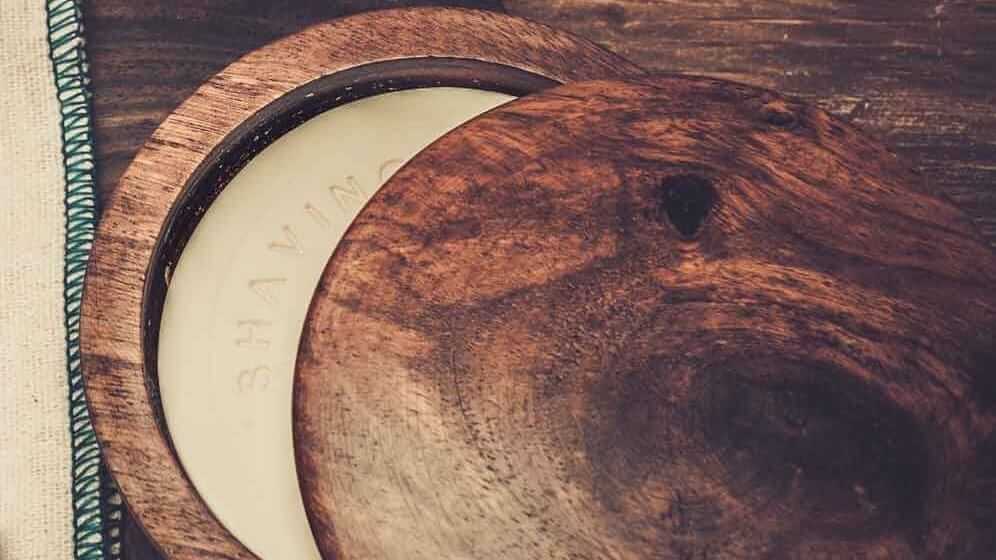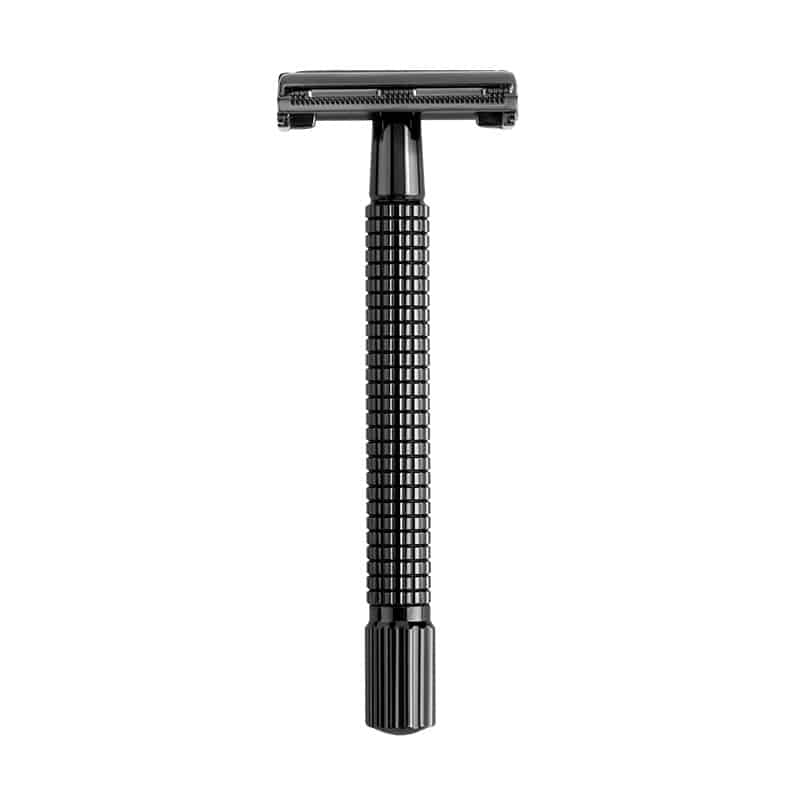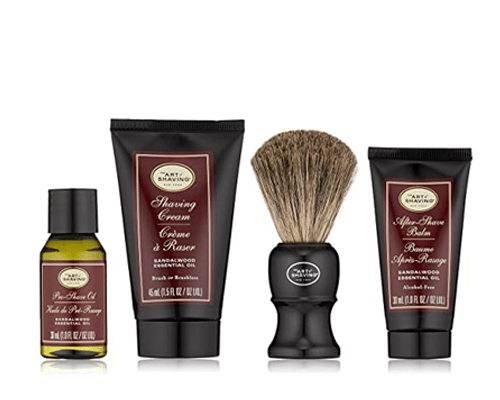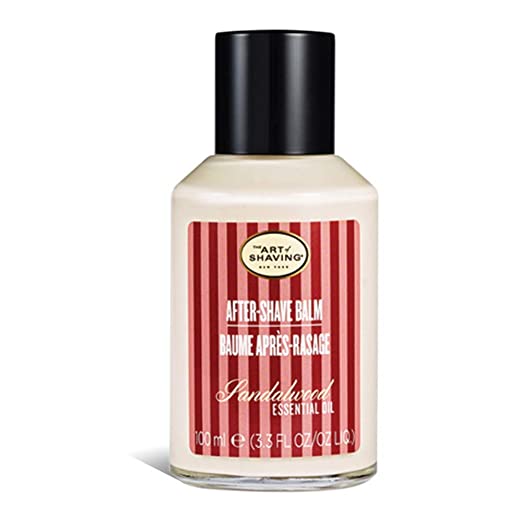Post Content
Post Content
Shaving Soap: The Real Man’s Way to Shave
Considering the importance of using sharp razors, properly preparing your facial hair, using the right method/strokes, the type of shaving cream to use, how to use shaving soap, and how you lather it, may seem a bit inconsequential.
However, the truth is that shaving cream plays an equally important role as these other factors.
While many men continue to shave with cheap, canned creams, body soap, or worst of all, with nothing but water, the fact is that using a high-quality shaving soap (e.g., Floris shave soap & Menthol shave soap) can easily help you get a closer shave.
It also reduces or sometimes eliminates razor burn, skin irritation, and other common shave-related problems.
We’ve already discussed how traditional wet shave can make shaving a more enjoyable experience and improve the overall results, and the only way to wet shave is by using either a classic lathering cream or shave soap, along with a shaving brush.
If you’re like most men, you’ve probably never used any of these products before, so we’re here to give you tips on how to use shaving soap.
Getting a good lather from using shave soap will indeed take a bit more time, but once you try it and see how much better it feels, you’ll surely be hooked for life.
However, before we get into the basics of how to use shaving soap, let’s first look at why shaving soap is so superior to various other products.

Advantages of Using Shaving Soap
Although we’ve already mentioned it many times, the benefits of wet shaving with soap cannot be stressed enough, as it leads to a closer shave with much less irritation.
For instance, Wholly Kaw shave soap & Artisan shave soap have the qualities to shave without any irritation).
Most Popular Products |
||
|---|---|---|
| "#1 Butterfly Safety Razor" | "Best Shaving Kit" | "Top After-Shave Balm" |
 |  |  |
| View on Sigma | View on Amazon | View on Amazon |
Still, the benefits don’t just entail the method, but also the means (i.e., shaving soap and brush) employed during the shaving.
One of the major problems with the majority of canned shaving creams is that they are loaded with chemicals and artificial lubricants (although there are a few decent, more natural options).
Shaving soaps on the other hand are usually made from mostly natural ingredients that work to nourish, hydrate, and protect the face, whilst providing better lubrication to allow the razor blade to gently glide over your skin.
Prominent examples of these types of skin-friendly shaving soaps are:
- Martin De Candre shave soap
- Palmolive shave soap
- PAA shave soap
Along with the other artificial ingredients in canned shaving creams are artificial fragrances, most of which smell more like cheap deodorant than anything pleasant.
Again, this isn’t a problem with shaving soaps though, as you can easily find them in a huge range of more pleasing scents (woody, citrus, spicy, musky, etc.).
Examples of shaving soaps with a pleasant smell include but are not limited to:
- Mystic Waters shave soap
- Wool Fat shave soap
- Mama Bear shave soap
A Quick Note on Scent Selection
When buying shaving soap, try to smell as many different products as possible to help you decide which you like best (it wouldn’t hurt to get your significant other’s opinion as well).
If you don’t wear cologne, you can easily go with something with a stronger scent, as the smell will fade with time.
However, if you do wear cologne, it’s best to go with the lightest scent possible, or better still, with an unscented soap—otherwise you risk the smell of the soap and that of the cologne mixing together into something much less pleasant.
How to Use Shaving Soap: Choosing Your Method
How to use shaving soap is not a big mystery as there is no right or wrong way to use shaving soap, as there are several different methods that can be used.
Nonetheless, there are really only a few minor differences between various lathering methods.
When it comes to deciding which method to use, it will usually depend on the quality of your shaving brush, how much time you’re willing to spend, and the specific shaving soap being used.
So, this means it may take a bit of experimentation on your part to determine which method works best for you.
Preparing the Soap and Shaving Brush
The first key step for proper use of shaving soap is to properly prepare your face for shaving by washing it and ensuring the hair is wet before you begin.
It’s also equally important that you prepare the shave soap and brush by soaking them in warm water.
Soaking the soap is important, as it softens it up to allow it to be loaded on the shaving brush.
The amount of time the soap needs to soak will vary from product to product, but in most cases, it won’t hurt to let it sit for 10-15 minutes.
This is why many men do this step before getting in the shower, after all, your face needs to be clean and warm before shaving anyways.
If you’re using a bar or puck of shaving soap, submerge it in the sink or a cup/bowl of warm water.
For soaps that come in their own tub or container, you can simply pour the water into them so that the surface of the soap is fully covered.
It is not essential, but you can take your shaving experience to the next level with a quality shaving bowl or scuttle.
Submerging the shaving brush soap in water is important as it allows it to soak up enough liquid to build a good lather.
In this instance, the amount of soaking time needed will depend on the type of hair the brush is made from.
For most horse or boar hair brushes, as well as lower quality badger hair, you’ll probably want to soak the brush for at least a few minutes (or however long you’re soaking the soap for).
Higher quality badger hair brushes may only need a minute or two of soaking, while synthetic brushes only need to be run underwater for a few seconds.
Lathering It Up
Once your face is prepared and your brush and soap have been soaked, it’s time to start preparing your lather, and here is where the methods diversify.
In general, there are two basic schools of thought—one that calls for minimal water and one that calls for lots of water (and results in a much creamier, richer lather).
For our purposes, we’ll stick with the creamy, extra water method (if you want to experiment with the other, simply use much less water).
However, no matter which method you’re using, you also have the choice to create the lather in a bowl, on the palm of your hand, or directly on the face.
Again, you may need to experiment to find which creates the best lather, as some soaps foam better in a cup or bowl, while others need to be lathered directly on the skin.
Still, in our opinion, a cup or bowl is often the best option.
Keep in mind that warming it up before you begin will transfer some of the heat to the lather, which feels fantastic on the face and helps to give a closer shave.
When you’re ready to start building the lather, first remove the excess water from the brush by giving it a quick light, shake.
If you poured water into the container of soap, dump it out as well.
Loading the Brush
The first step to building lather is to load the wet brush with soap by rubbing it in a circular pattern on the soap.
You want to make sure to press just hard enough so that the bristles begin to become splayed.
As your brush should still be quite wet, some excess water and soap may spill out at first, but don’t worry, just keep swirling the brush until you the bubbles in the foam are tiny.
The point of this process isn’t to build lather yet, just to coat the brush well enough with soap.
Still, you’ll probably be surprised by how little product it actually takes, so don’t go overboard, as this can make the cream too stiff.
Building the Lather
Once your brush is loaded with soap, you can then start building the lather by swirling it in your cup/bowl or directly on your face.
If you’re doing it in a cup or bowl, you may want to add just a few drops of warm water to it first.
The soap will start to slowly build up a lather as you swirl the brush around, and after about 30 seconds, dip the tip of the brush back into the water before continuing the process.
Depending on the soap, it may take as much as three to five minutes before you’re satisfied with the consistency of your lather, but it’s worth the time.
One thing to note, shaving soap will almost never lather up as much as the canned creams you’re used to, and instead, you’ll probably end up with something a bit looser and more watery.
However, the more you work it with your brush, the more it will lather, but your goal should be a foam that forms small, rounded peaks when you pull the brush away.
Once the lather is ready, use the brush to evenly apply it to the face, again using small circular motions.
This motion helps to draw up the hairs and ensure everything is fully coated.
You just need to know how to create a lather with a shaving brush and you are halfway done.
How to use shaving soap: Experimentation is Key
As we’ve said, it may take you some time to find the precise method that works best for your brush and soap.
There is no right way or wrong way how to use shaving soap, so don’t be afraid to experiment with longer/shorter loading and/or lathering times, more/less water, etc.
If after trying many different methods, you still can’t seem to get a proper lather, your problem is likely related to hard water, as the minerals in hard water can sometimes affect the lathering potential of many shaving soaps.
Some examples of shaving soaps that hard water hampers to an extent their lathering ability are:
- Dr. Harris shaving soap
- Barrister shave soap
- Mann shave soap
- Rustic shaving soap
If you think this might be the case, try using a bottle of distilled water to see if the results improve, or test your home for hard water to find out for sure.
It definitely takes a bit of time to learn how to use shaving soap properly, but once you finally get the hang of it, it will surely be a rewarding experience—helping you on the way to a more enjoyable shaving experience.
Don’t forget to pick yourself a quality safety razor as well to achieve that perfect baby bottom smooth shave we all desire.

How can I get hair removal soaps
Looking for a good hair removal soap that can also serve as bathing soap